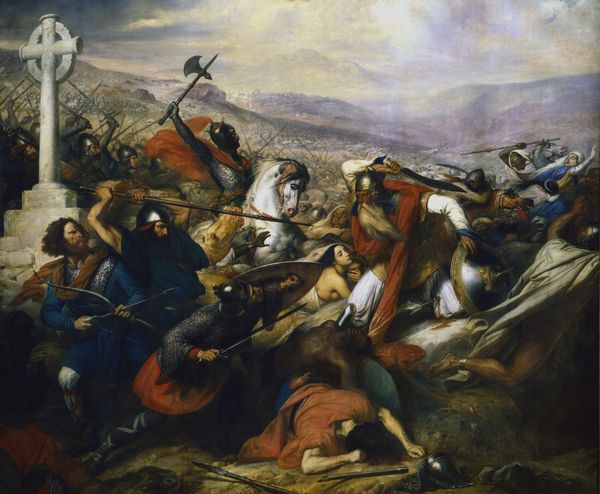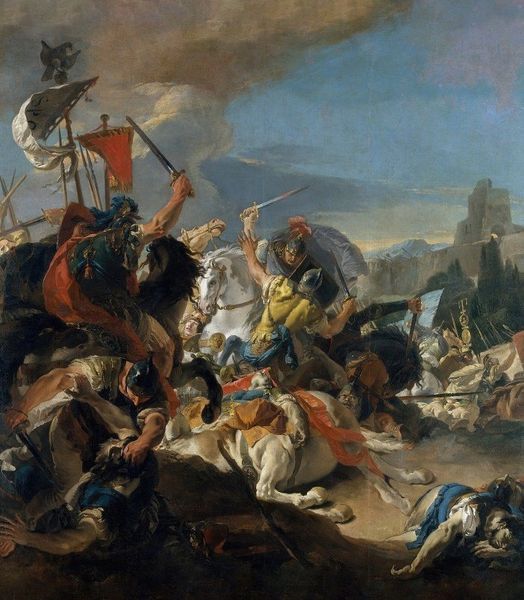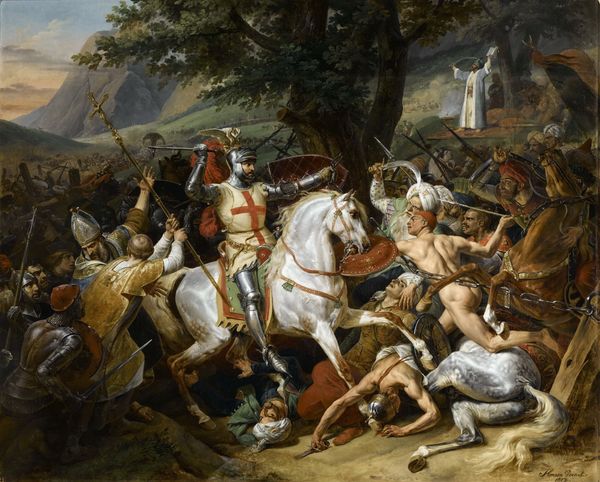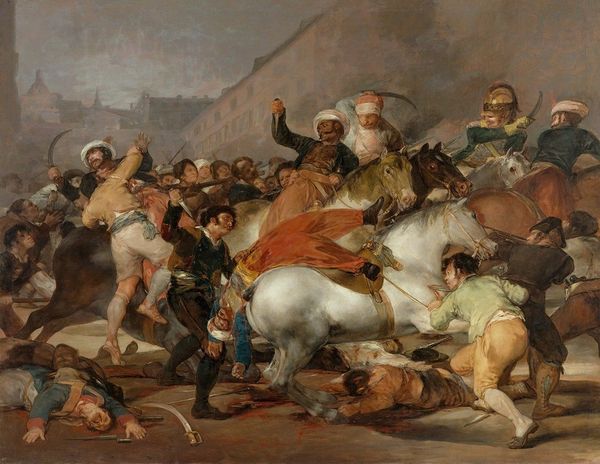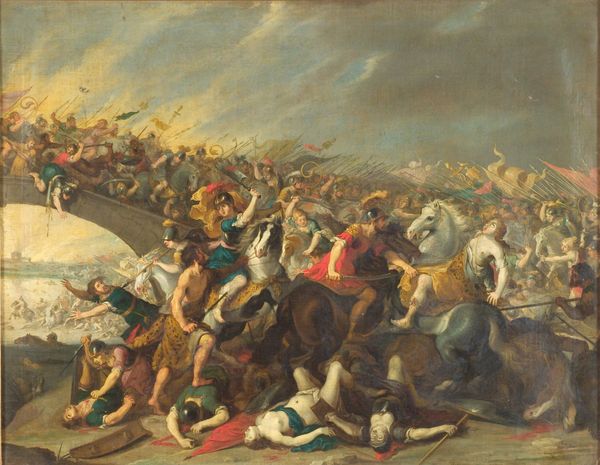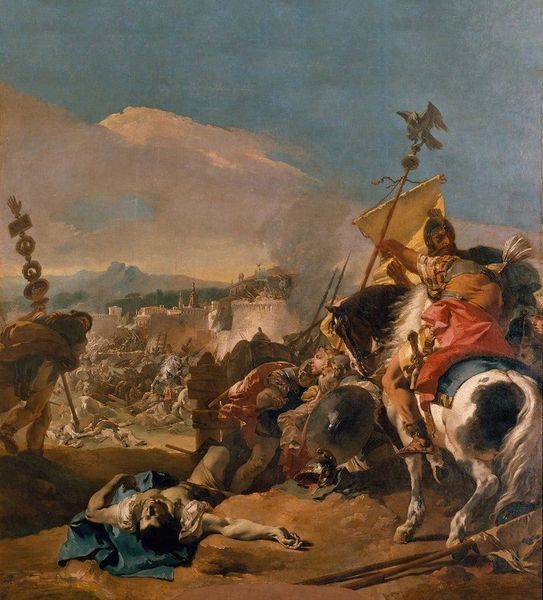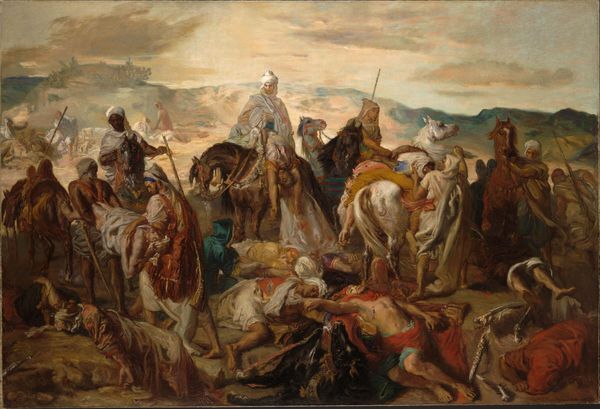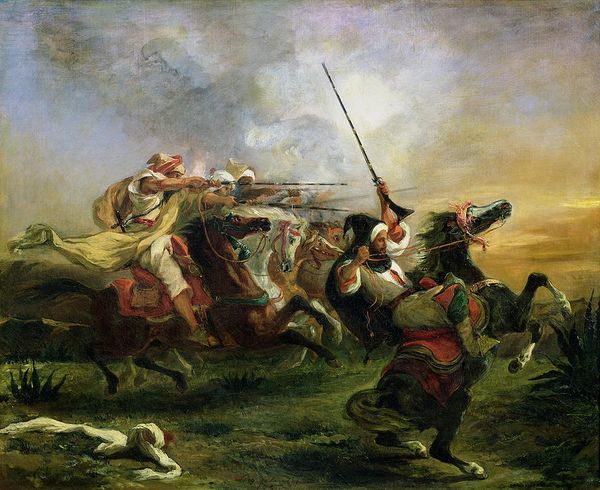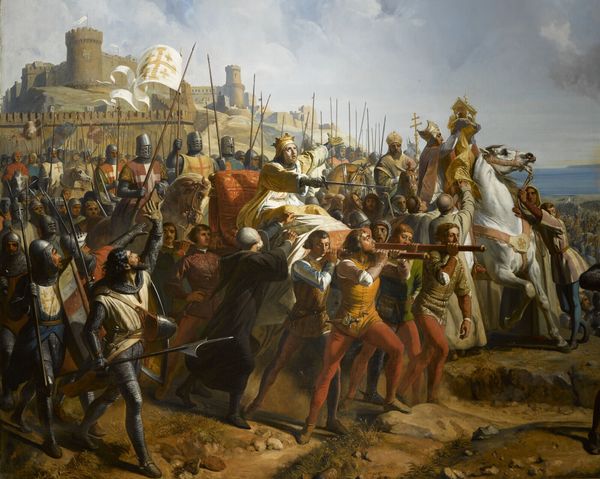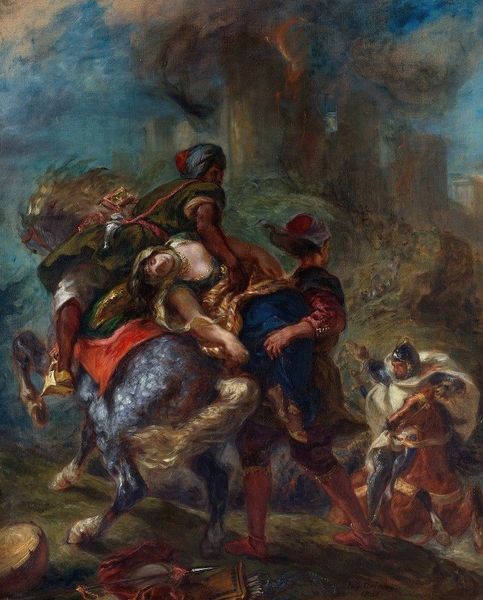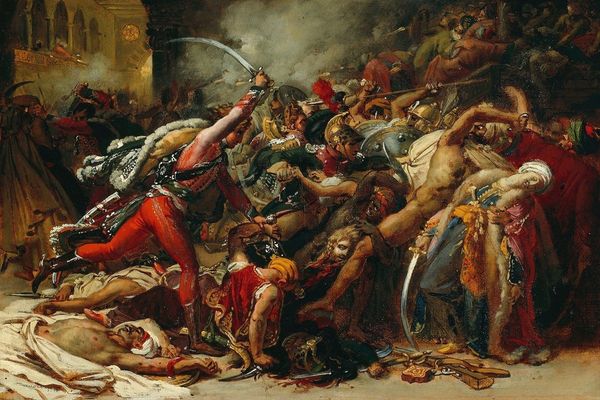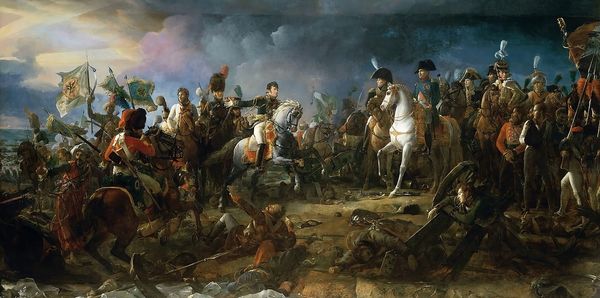
Copyright: Public Domain: Artvee
Gyula Benczúr painted this grand oil-on-canvas depiction of the Reoccupation of Buda Castle sometime in the late nineteenth or early twentieth century. The painting commemorates the Christian forces retaking Buda from the Ottoman Empire in 1686. Benczúr’s painting invites us to consider the politics of imagery. It’s hard not to see a nationalist fervor in the artist's own time being projected onto the past. Hungary had been part of the Austro-Hungarian Empire since 1867, and so this moment in the past, when Christian forces expelled the Ottomans, may have served as a potent symbol of Hungarian self-determination. The painting seems to ask: what does it mean to be Hungarian and what historical narratives define a sense of nationhood? Historical paintings like this were often commissioned by the state or by wealthy patrons, so as historians we can ask what social conditions made this painting possible? What function did it serve? And what does it reveal about the social and political climate in which Benczúr lived? We might consult historical archives, political pamphlets, and newspapers from the period to better understand.
Comments
No comments
Be the first to comment and join the conversation on the ultimate creative platform.
